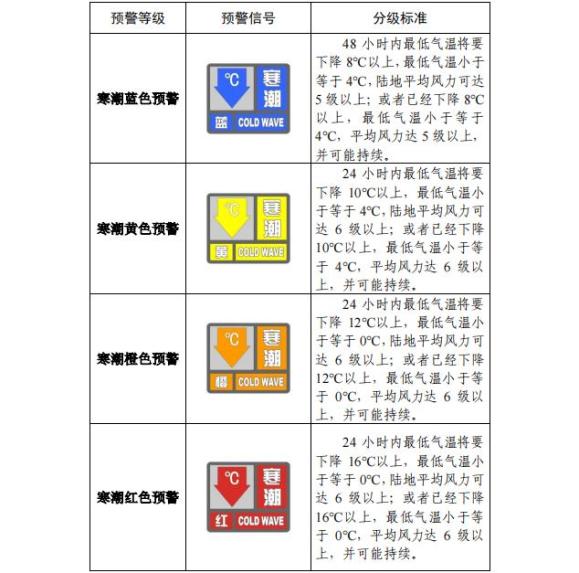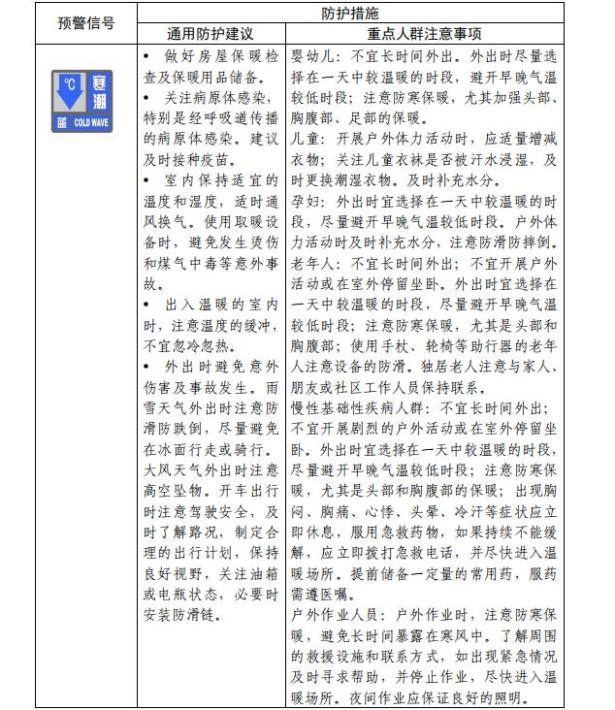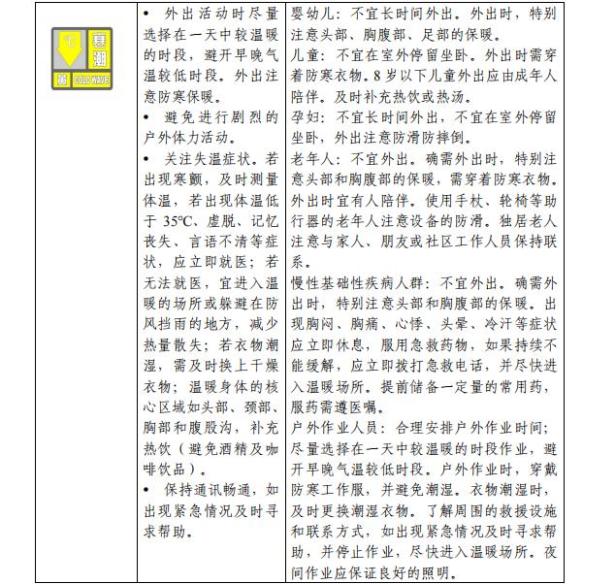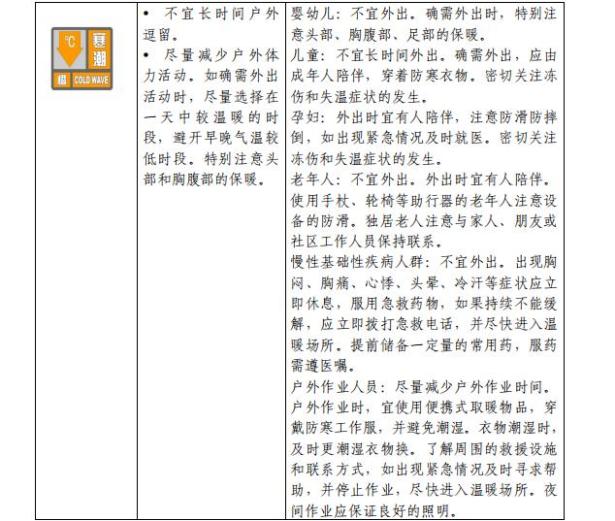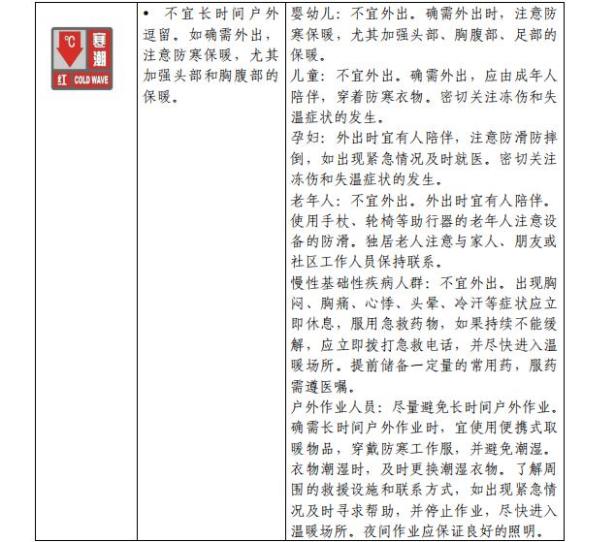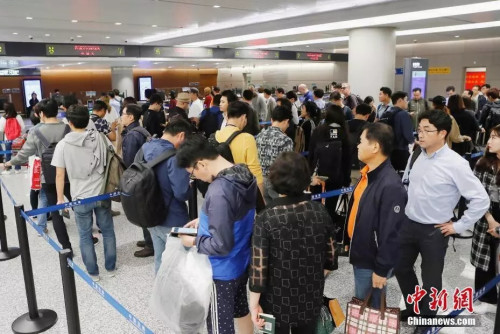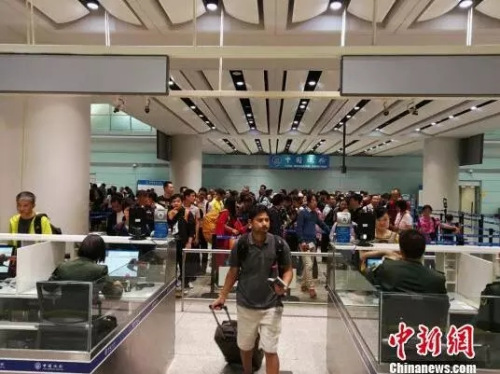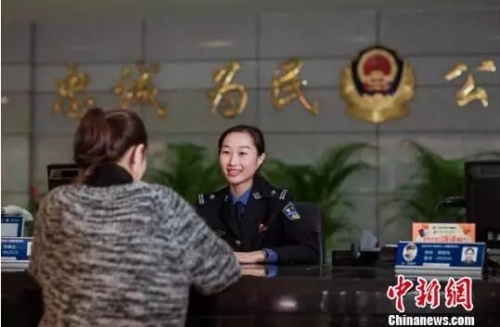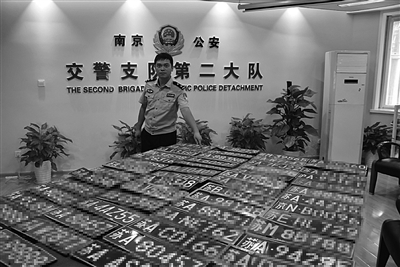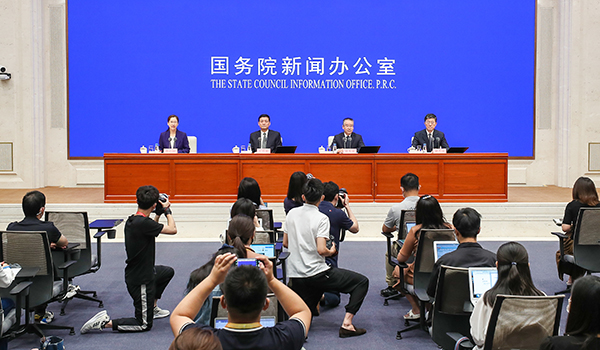() The business review of the Board of Directors in the first half of 2023 is as follows:
I. Description of the industry and main business of the company during the reporting period.
(a) the industry situation
1. The global economic and trade recovery is tortuous, and the domestic economy is picking up.
In terms of global economy, the World Trade Organization will increase the growth rate of global trade from 1% predicted in the fourth quarter of 2022 to 1.7% in 2023, and predict that the growth rate will rebound to 3.2% in 2024. The International Monetary Fund predicts that the global economic growth rate will be 3.0% in 2023 and 2024. At the same time, Asian emerging markets and developing economies represented by China and India will lead the world with economic growth rates of 5.3%(2023) and 5.0%(2024). However, many institutions, including the International Monetary Fund, the World Bank and the World Trade Organization, also pointed out that the prospect of global economic and trade recovery in 2023 is not clear, and it will always face the impact of negative factors such as high inflation expectations and the impact of the financial system. At the same time, the trend of trade regionalization and the risk of decoupling and breaking the supply chain will inhibit the recovery of global economic and trade activities.
In terms of China’s economy, according to the data released by the National Bureau of Statistics, China’s GDP increased by 5.5% year-on-year in the first half of the year, and the overall economic growth rate rebounded, ranking among the leading economies. According to the import and export trade data released by the General Administration of Customs, the scale of import and export trade in the first half of the year exceeded 20 trillion yuan for the first time in the same period, reaching 20.1 trillion yuan, up 2.1% year-on-year. Among them, ASEAN and the "Belt and Road" countries have had a positive pulling effect on supporting China’s import and export scale. In the first half of the year, the total import and export trade between China and countries along the Belt and Road reached 6.9 trillion yuan, accounting for 34.3% of China’s total import and export value in the same period, up 9.8% year-on-year; The total import and export trade with ASEAN reached 3.1 trillion yuan, up 5.4% year-on-year, maintaining its position as the largest trading partner. With the deepening of regional industrial chain cooperation and international economic and trade cooperation led by China, China’s import and export trade will maintain a steady and positive growth trend.
2. Air freight supply recovered, demand weakened, and revenue declined significantly.
Domestically, according to data from the Civil Aviation Administration, as the civil aviation industry as a whole entered a stage of rapid recovery, the total cargo and mail turnover of civil aviation in the first half of 2023 was 12.65 billion tons kilometers, an increase of 1.9% over the same period of 2019, and the transportation production level of the industry basically recovered to the level of 2019. Internationally, the global air cargo demand has weakened due to factors such as the high inflation level of major economies in the world and the weak overall growth of the world economy. According to the data released by IATA, the global air cargo demand in the first half of 2023 decreased by 8.1% year-on-year, 5.9% compared with the same period in 2019; With the rapid recovery of the belly cabin of international passenger aircraft, the global air transport capacity supply (available tons and kilometers of mail) exceeded the level of the same period in 2019 for the first time from April 2023, with a year-on-year increase of 9.9% in the first half of 2023 and an increase of 0.9% compared with the same period in 2019.
IATA, the international air transport association, recently lowered the forecast value of air cargo revenue of global civil aviation industry in 2023 from the previous value of $149.4 billion to $142.3 billion, which was significantly lower than the revenue scale in 2021 ($210 billion) and 2022 ($207.3 billion).
3. Policy tools to cultivate the kinetic energy of aviation logistics development.
The strategy of strengthening the country by transportation is a major strategic decision made by the CPC Central Committee. As an important part of a strong country by transportation and a leading industry under the new development pattern, aviation logistics plays an important strategic supporting role in building a high-quality "double-cycle" system, such as serving the domestic demand market consumption upgrade, serving China manufacturing to climb the hill and push brands out to sea. In the first half of this year, the Ministry of Transport, the Civil Aviation Administration and other relevant government departments successively issued a number of support and standardization policies for China’s aviation logistics industry. In January, 2023, the Civil Aviation Administration issued the "Guide to the Work of Keeping Aviation Logistics Smooth and Smooth", aiming at establishing and improving the system and mechanism of aviation logistics and giving full play to the basic guarantee role of aviation logistics in the industrial chain and supply chain; In February 2023, the People’s Bank of China, the Ministry of Transport and China Banking and Insurance Regulatory Commission jointly issued the Notice on Further Improving Financial Support and Services in the Field of Transportation and Logistics, and effectively increased the financial sector’s support for the transportation industry through various policy tools; In March 2023, the Ministry of Transport, the State Railway Administration, the Civil Aviation Administration and other departments jointly issued the "Five-year Action Plan for Accelerating the Construction of a Transport Power (2023 -2027)", taking various measures to help China build a safer, higher quality, more efficient, fairer and more sustainable civil aviation construction system; In July 2023, the Civil Aviation Administration issued the Guiding Opinions on Printing and Implementing the Overall Deployment of Digital China Construction and Accelerating the Construction and Development of Smart Civil Aviation, aiming at better coordinating the construction of new infrastructure and activating the potential of data elements.Give full play to the role of smart civil aviation construction as an innovation engine in promoting the high-quality development of civil aviation.
4. The operation of industrial logistics and aviation logistics has maintained a recovery trend, and sub-sectors have created new engines for growth.
According to the data released by the National Development and Reform Commission, the total logistics of industrial products nationwide in the first half of 2023 was 146.8 trillion yuan, accounting for 91.4%, up 3.8% year-on-year, maintaining a recovery trend. With the in-depth implementation of China’s innovation-driven strategy, industrial upgrading has been solidly promoted, new kinetic energy has grown rapidly, and the support for industrial production has been continuously enhanced. According to the data released by the General Administration of Customs, in the first half of 2023, China’s exports of industrial products increased by 3.3% year-on-year, and the development trend of high-end, intelligent and green industries was obvious. Driven by the rapid growth of exports of "new three kinds" (new energy vehicles, photovoltaic modules and lithium batteries), China’s exports of mechanical and electrical products increased by 6.3% year-on-year in the first half of 2023, accounting for 58.2% of the total export value. According to Seabury, a professional service organization in the aviation industry, the total value of China’s air import and export from January to May 2023 exceeded US$ 312.4 billion, which has basically recovered to the same period in 2019; The total import and export cargo by air is 1.825 million tons, which has recovered to 91.1% in 2019. The categories of cargo are mainly industrial logistics represented by high technology (including 3C equipment, medical equipment, semiconductors, etc.), machinery and equipment parts (all kinds of manufacturing-related parts, etc.), raw materials, chemicals and pharmaceuticals (including pharmaceutical products, testing reagents, etc.), electromechanical equipment, automobiles and parts. With the slowdown of inflation in major developed economies in Europe and America and the gradual restoration of confidence in overseas markets, it will help stimulate economic activities, have a positive impact on demand and further support China’s exports.
(1) New forces at sea help cross-border e-commerce to open up growth space.
According to the preliminary statistics of the Customs, the advantages and potential of cross-border e-commerce in "buying the world and selling the world" continued to be released in the first half of this year, with the import and export reaching 1.1 trillion yuan, up 16% year-on-year. Among them, exports reached 821 billion yuan, up by 19.9%, and imports reached 276 billion yuan, up by 5.7%, which continued to maintain a good development momentum and effectively helped China’s foreign trade to stabilize its scale and optimize its structure. The expanding global e-commerce market has brought huge development space for China’s cross-border e-commerce business, and the international market’s acceptance and recognition of China-made and China-made brands going to sea has been increasing, which will promote the rapid growth of China’s cross-border e-commerce demand. As a representative of the new generation of offshore platforms, TEMU has successively opened up markets in Europe, Japan and other countries after the American market. TikTok has continuously deepened its social content e-commerce and exerted its strength in the Southeast Asian market, and the total commodity transaction volume GMV has hit record highs.
Focusing on the two key elements of market and product, the company comprehensively improves the capabilities of cross-border e-commerce logistics market development, product operation and maintenance, front-end collection and terminal distribution, grasps the overall situation of development, improves the ability to develop cross-border e-commerce market in South China represented by Shenzhen, speeds up the distribution of resources, increases investment capacity, enriches the layout of aviation network in South China, and enhances its competitiveness in Guangdong-Hong Kong-Macao Greater Bay Area.
(2) China contract logistics enterprises to speed up the layout of the sea.
In recent years, China’s high-tech and high-value-added products and related industries have greatly accelerated the expansion of overseas markets, and gradually occupied a dominant position in China’s export structure. For example, the "new three kinds" of foreign trade, which continues to heat up, has become a new growth point for the transformation and upgrading of manufacturing industry. The contract logistics enterprises in China also actively responded to the global expansion of China manufacturing, and gradually accelerated the layout speed of the global logistics service network. In addition to the traditional Southeast Asian market, more and more local contract logistics enterprises in China are going to Latin America, Africa, Europe and the United States with manufacturing and consumer brands, and building a global logistics infrastructure network led by American enterprises.
The company constantly tries to integrate overseas logistics enterprises with network advantages in various ways to provide customers with "one-stop" comprehensive logistics solutions. In February, 2023, the company officially launched its self-developed online sales platform "Orange Swallow". Through cooperation with many overseas online platforms, it provided a number of important trade channels with Shanghai as the anchor point, traveling to and from Europe, America and the Asia-Pacific region, and further deepened the development of the global freight market.
(3) Accelerate the construction of high-quality cross-border cold chain logistics service system.
The National "14th Five-Year Plan for Cold Chain Logistics Development" points out that as China has turned to a high-quality development stage, the industry has accelerated to the middle and high end of the global value chain, and modern agriculture, food industry, pharmaceutical industry and service industry are facing an overall upgrade. The demand for high-quality, refined and personalized cold chain logistics services is growing day by day, so it is necessary to vigorously develop aviation cold chain logistics for high-end fresh food and pharmaceutical products. According to the data of the General Administration of Customs, China’s imported meat and edible aquatic products increased by 9.5% and 30% respectively in the first half of this year. Fruit imports from ASEAN reached 40.54 billion yuan, up 24.1% year-on-year, among which fresh durian increased by as much as 65%. ASOEX, a Chilean fruit exporter association, points out that China is the main export destination of Chilean cherries. In 2022-2023, Chile exported 372,000 tons of Chilean cherries to China, accounting for 97% of the total export volume of Chilean cherries in Asia. According to the data of Norwegian Seafood Bureau, the value of salmon imported by China from Norway in the first half of this year was 1.97 billion yuan, an increase of 95% over the same period last year.
The company set up a wholly-owned subsidiary, Fresh Port (Ningbo) Supply Chain Management Co., Ltd. (hereinafter referred to as "Fresh Port Company") in Ningbo, focusing on cross-border direct procurement of fresh food. With the advantages of Ningbo Port and its own air transport resources, it has built a fresh port model integrating port service, cold chain transportation, cold chain storage, processing and trading, and continuously expanded the categories of imported fresh food. In the first half of the year, the company and Box Horse jointly purchased and introduced high-quality fruits such as mangosteen, durian, mango and dragon palace fruit from Thailand to Shangchao channel through Ningbo. On this basis, the company plans to replicate the fresh port model to many places in China, and with the help of the increasingly perfect cold chain logistics supply chain, send more foreign high-quality fresh products to China to meet the increasingly diversified needs of consumers in China.
(2) Main business information
1. Air Express
China Eastern Airlines Logistics provides customers with air cargo logistics services covering major international and domestic airline networks by means of all-cargo transportation and passenger cabin transportation. By the end of the reporting period, the company owned 17 all-cargo planes, including 15 B777 and 2 B747. The company’s all-cargo flights reach many international cities such as Los Angeles, Chicago, Frankfurt, Amsterdam and new york. The belly cabin transportation of passenger aircraft mainly relies on the global route of China Eastern Airlines. Through SkyTeam, code sharing and SPA agreement, the route network reaches 1,088 destinations in 184 countries and regions around the world. Relying on the competitive advantages of air express business, such as fast transportation speed, large spatial span, safe and accurate transportation, and being not limited by geographical conditions, the company has continuously increased its own transportation capacity to build an air express product system covering express, special freight and general goods with different transportation timeliness and product service requirements, thus contributing to the optimization and upgrading of China’s industrial structure, the transformation and upgrading of manufacturing industry and the brand’s going out to sea.
2. Integrated ground services
Ground comprehensive services include cargo terminal operation, multimodal transport, warehousing business, etc. Fast and efficient ground comprehensive services not only reduce the time cost and transportation cost of aviation logistics enterprises, but also provide convenience for broadening logistics channels and improving the accessibility of cargo transportation, which is a necessary extension and core guarantee link of aviation logistics.
(1) Cargo Terminal Operation
The company has 17 self-operated cargo terminals and 1.5 million square meters of storage area and operation site nationwide, and has built the unique advantages of domestic cargo terminals and storage ground service network. On this basis, it has further improved the development, design and marketing capabilities of innovative products and services for ground services, empowered the operation of air cargo terminals through digital intelligence construction, and provided partners with ground services including assembling, tally, transit, and information processing of inbound and outbound documents.
(2) Multimodal transport
The company improves the operational efficiency and service level of multimodal transport services by accelerating the improvement of informatization and intelligence, opening up the freight information chain and realizing information sharing, and provides customers with multimodal transport services such as truck flight services for inbound and outbound goods, short ground connection between cargo stations and other additional services provided according to customer needs.
(3) warehousing business
In addition to general cargo storage in airport cargo terminals, the company has diversified special storage resources such as temperature-controlled cargo warehouses (including cold storage, freezer and constant temperature warehouses), dangerous goods warehouses, precious goods warehouses, live animal warehouses and out-of-gauge cargo warehouses, which are rare in China and can meet the storage needs of special goods, and also provides storage services in customs supervision areas for international import and export goods.
3. Integrated logistics solutions
The company deeply cultivates integrated high-end logistics solutions, seizes the strategic opportunity of China enterprises to improve supply chain efficiency and establish an independent and controllable global supply chain system, deeply digs into customers’ demand for supply chain upgrade, highlights the "timeliness" and the value of having airline transportation resources, and provides high-end logistics solutions that are different from other competitors in resource-advantaged regions and markets, so as to create a supply chain system with the capabilities of information management, inventory control, lean delivery and multimodal transport, and provide customers with customized and efficient high-end logistics "China Eastern Airlines Scheme".
(1) Cross-border e-commerce solutions
At present, cross-border e-commerce has injected new momentum into China’s foreign trade development. The company makes full use of the advantages of Pudong Airport’s port and trunk resources to provide direct mail customs clearance services, domestic operations, container warehouse operations, international air transportation and other basic services for the logistics needs of e-commerce sellers, e-commerce platforms, independent stations and cooperative logistics service providers. At the same time, by integrating overseas customs clearance, transshipment and tail-end delivery supplier resources, we will provide sellers and platform customers with cross-border export logistics services in the whole process or "port+warehousing" to enhance the company’s full chain service level, comprehensive service capability and international competitiveness.
(2) Direct origin solution
Direct origin is committed to building a global high-end renewable animal protein and fruit and vegetable fast cold chain service integrator: providing one-stop supply chain services from overseas origin to designated locations in China, such as overseas fresh food collection, factory delivery, international transportation, customs clearance and port temporary processing. Fresh transportation can provide customers with customized charter flights, ships and cabins, as well as sea-air combined transport, international transit transport, domestic distribution and warehouse delivery services; Fresh trade services can provide customers with flexible and diverse trade forms such as FOB (fob), CIF (CIF) and CNF (CIF (excluding insurance)); Fresh port service can provide customers with value-added services such as port temporary storage, subcontracting and initial processing. The place of origin goes directly to the information platform of Feilai Fresh, which connects all links of overseas factories, means of transport and domestic sales channels, and helps the high-end import and export fresh supply chain system become more agile, smarter and more transparent. With faster speed, better quality and more assured supply chain service, China Eastern Airlines’ direct production area meets the people’s desire for a better life.
(3) Supply chain of peer projects
The inter-bank supply chain project mainly provides standardized air transport and ground integrated services for customers in postal, express and air freight forwarding industries; In addition, according to the needs of some customers, based on the linkage effect formed by self-owned routes and cargo terminals, we provide customers with "port-to-port" cross-border transit aging products. This business integrates the advantages of all parties in the supply chain to create more economical and high-quality aviation logistics service products for customers.
(4) Customized logistics solutions
Customized logistics solutions are mainly aimed at customers in high-tech, biomedical, aviation equipment, consumer goods and other industries, and provide highly customized "one-stop" integrated logistics service solutions based on customers’ differentiated aviation logistics needs. On this basis, the company has continuously tapped its own advantages, grafted external superior resources in many ways, further extended its service chain and further enhanced its market competitiveness.
Second, the discussion and analysis of the business situation
(1) Overall operation in the first half of 2023
In the first half of 2023, due to the high inflation level of major economies in the world and the weak overall growth of the world economy, the global air cargo market demand weakened; With the rapid recovery of the belly cabin of international passenger aircraft, the supply of air transport capacity has increased, the air freight rate has fallen sharply, and the air freight market has gradually returned to the normal stage.
Facing the new situation, the company adheres to the general tone of steady progress, constantly enhances the core competitiveness of enterprises, accelerates the development towards high quality, and promotes the effective improvement of quality and reasonable growth of the company’s business. In terms of air express transportation, we should better coordinate development and safety, adjust the structure and scale of the fleet in an orderly manner, continuously optimize the layout of the aviation network, actively seize the market, maintain the cargo carrying rate at a high level, and achieve an increase in the total turnover of cargo and mail transportation; In terms of ground comprehensive services, we will strengthen the maintenance of airline companies and agent customers, consolidate our dominant position in Shanghai’s main base, vigorously expand cargo charter business and truck flight business, and continue to promote innovative businesses such as one-stop air service center, so that the cargo and mail handling capacity will increase; In terms of integrated logistics solutions, we will strengthen direct customer marketing, concentrate superior resources to protect core customers, establish a cross-border free-wing product service system with the characteristics of China Eastern Airlines logistics brand, provide air transportation solutions for many high-tech enterprises, accelerate the construction of cross-border fresh food express transportation network, and achieve rapid growth in imported fresh food business.
1. Main financial data
In terms of operating income and gross profit, during the reporting period, the company achieved operating income of 9.376 billion yuan, down 19.22% year-on-year, of which the main business income was 9.372 billion yuan, down 19.20% year-on-year; During the reporting period, the gross profit of the company’s main business was 2.295 billion yuan, down 36.62% year-on-year, and the comprehensive gross profit margin was 24.48%, down 6.73 percentage points year-on-year. See Table 3 and Table 4 for the income and gross profit of each business segment.
In terms of air express transportation, from the revenue side, the company has steadily increased and optimized the transportation capacity, and maintained the cargo carrying rate at a high level. In the case of weak market demand, it has dug deep into the supply potential, stabilized existing customers and developed new customers, and the total turnover of cargo and mail transportation has increased by 13.82% year-on-year. Due to the weakening of investment and consumer demand in overseas markets, the demand for air freight decreased, and the spot freight rate in the air freight market fell sharply. According to TAC air freight price data, the spot freight rates from Shanghai to North America and Europe all fell by more than 45% at the end of the reporting period. Although the company locked in the price by signing a certain proportion of long-term contracts, the overall freight rate still fell sharply during the reporting period. Under the influence of the above-mentioned volume and price factors, the business income of air express plate decreased year-on-year. From the cost side, due to the expansion of fleet size and the increase of cargo and mail turnover, the main operating costs such as depreciation and jet fuel cost of all cargo planes increased year-on-year, and the transportation service price of passenger cargo business decreased year-on-year due to the large reduction of customers and the sharp decline of freight rates. On the whole, the cost of this sector decreased by 23.25% year-on-year. During the reporting period, the aviation express segment realized the main business income of 4.528 billion yuan, down 35.29% year-on-year, and the gross profit margin of the main business was 28.51%, down 11.21 percentage points year-on-year.
In terms of ground integrated services, from the revenue side, the company actively tapped the market potential and accelerated the development of innovative businesses such as one-stop air service center. At the same time, due to the low base in the same period last year, the cargo and mail handling volume recovered steadily during the reporting period, increasing by 16.54% year-on-year, realizing the growth of main business income. From the cost side, the company continued to improve personnel efficiency by building smart cargo terminals. During the reporting period, labor costs decreased slightly year-on-year, and at the same time, the expenditure on epidemic prevention expenses was reduced compared with the same period last year. During the reporting period, the ground comprehensive service sector realized the main business income of 1.167 billion yuan, up 6.49% year-on-year, and the gross profit margin of the main business was 36.46%, up 17.00 percentage points year-on-year, of which the gross profit margin in the second quarter was 41.57%, which returned to the historical high level.
In terms of integrated logistics solutions, the company fully integrates its own resource advantages such as air transportation and ground cargo terminal operation, enhances the satisfaction of direct customer service and enhances customer stickiness, while continuing to play its leading role in cross-border fresh food supply chain and expanding its business scale. During the reporting period, the integrated logistics solutions segment realized the main business income of 3.678 billion yuan, a year-on-year increase of 4.86%; In the case of a sharp decline in air freight rates, the gross profit margin of the main business remained at 15.73%, a slight decrease of 2.18 percentage points.
In terms of expenses, during the reporting period, sales expenses and management expenses were basically the same as those of the same period last year; The company continued to increase investment in business management systems and information systems, and spent 14.07 million yuan on research and development, up 97.64% year-on-year; Due to the exchange loss caused by the fluctuation of RMB exchange rate and the interest expenses caused by the introduction of new financial leasing aircraft, the financial expenses increased by 261.15% during the reporting period.
In terms of net profit, during the reporting period, the company achieved a net profit of 1.47 billion yuan, down 41.40% year-on-year, due to factors such as the sharp drop in air freight rates and exchange losses. The net profit rate was 15.68%, down 5.93 percentage points year-on-year; The net profit attributable to the owners of the parent company was 1.272 billion yuan, a year-on-year decrease of 40.11%; The net profit attributable to the owner of the parent company after deducting non-recurring gains and losses was 1.137 billion yuan, down 45.03% year-on-year.
In terms of capital structure, as of the end of the reporting period, the company’s assets maintained steady growth, with total assets of 27.446 billion yuan and net assets attributable to shareholders of listed companies of 14.234 billion yuan, up by 5.29% and 5.25% respectively compared with the end of last year; The company’s asset-liability ratio was 43.19%, down 0.48 percentage points from the end of last year.
2. Main business operation data
During the reporting period, the main operating data of the company’s air express, ground integrated services and integrated logistics solutions are shown in Table 5, Table 6 and Table 7.
(2) Consolidate the operating chassis and improve the operational toughness, and the efficiency of air express transportation is generally stable.
1. Adjust the structure of the fleet steadily, and accurately ensure the operation guarantee.
In terms of fleet planning, during the reporting period, the company continued to implement the "14 th Five-Year Plan" all-cargo aircraft fleet development plan and continuously optimized the fleet structure and scale. Two brand-new B777 all-cargo planes were successfully introduced by means of financial leasing, and two B777s whose operating lease contracts were due to expire were started to be returned. By the end of the reporting period, the company had 17 registered cargo planes, including 15 B777 and 2 B747. The follow-up company will further optimize the fleet structure and form a unified fleet of B777 aircraft, all of which will be owned or financed, which will help to reduce the overall aircraft holding cost and operating cost of the company.
In terms of aircraft operation, the company coordinates development and safety, and accurately pays attention to operational guarantee. In terms of flight technology and crew management, strengthen training management, make full efforts to make arrangements for crew configuration, ensure balanced strength of crew, and meet flight production needs; In terms of maintenance supervision, strengthen the control of aircraft key systems and repeated technical failures, dynamically optimize and adjust the execution time of C inspection, and improve the arrival rate of aircraft; In addition, through the continuous optimization and adjustment of air routes and alternate sites, economic oil loading and other measures, the operation cost is reduced.
During the reporting period, the carrying rate of all cargo planes was 82.75%, down by 1.64 percentage points year-on-year; With the withdrawal of the "passenger-to-cargo" derived from meeting the freight demand and the rapid recovery of the belly cabin of conventional passenger aircraft, the route structure of passenger aircraft freight business has changed, resulting in a significant decline in the passenger aircraft freight business carrying rate, down 8.63 percentage points year-on-year to 30.10%.
2. Continuously optimize the route network and promote the construction of express product system.
For all cargo planes, the company is committed to building an all cargo plane route network with Shanghai as the main hub, Guangzhou-Shenzhen as the secondary hub, and Beijing and Chengdu-Chongqing as the "two wings". During the reporting period, the company actively expanded and encrypted the frequency density of European and American routes. First, encrypt the frequency density of routes in Europe, America and Japan to consolidate Shanghai’s position as the main hub; Second, a new all-cargo flight from Shenzhen to London will be opened, so that the direct capacity of routes in South China can cover the European and American markets. During the reporting period, the company had 17 scheduled flights for all cargo planes, including 15 from Shanghai and 2 from Shenzhen.
In terms of passenger cargo business, during the reporting period, with the rapid recovery of international conventional passenger cabin, the company made overall plans for conventional passenger cargo business and unconventional passenger cargo business, deepened cooperation with major intermodal partners in Europe, America and Asia, and carried out intermodal transport with Delta Air Lines and Japan Airlines on the Shanghai-Seoul/Tokyo route in the form of package cooperation. At the end of the reporting period, the company’s passenger aircraft belly cabin transportation mainly relied on the global routes of China Eastern Airlines. Through SkyTeam, code sharing and SPA agreement, the route network reached 1,088 destinations in 184 countries and regions around the world.
In terms of product system construction, the company actively expands the transit business, makes full use of the coverage advantages of domestic passenger aircraft belly cabin and ground truck network by using the policy of "customs clearance integration", further enriches the products with "port-to-port" time limit, and extends them to the hinterland of the Yangtze River Delta, southwest China, South China and other regions to dig deep into the aviation logistics demand of high-value goods, expand the product coverage and improve the revenue level of the whole network.
3. Strengthen market development, resist fluctuations and seek resilience.
During the reporting period, in terms of long-term contract signing, the company maintained the annual contract signing rate of all cargo planes to a reasonable level through the combination and promotion of various service products, of which the contract signing rate of long-term routes originating from Europe and America in Shanghai was over 60%, and that of short-term routes in Asia-Pacific was about 50%; In terms of cooperation with major customers, the company has continuously deepened cooperation with large international logistics enterprises ranked in the forefront of global air transport, and reached cooperation agreements with many international logistics giants; In terms of domestic passenger aircraft belly cabin sales, we will strengthen cooperation with domestic express delivery companies such as SF Express, Leap Forward and Tongda Department, and launch "road-to-air" and economic mail products; In addition, bidding for domestic sites and zero-low-income flights was carried out, and underwriting and booking agreements were signed. By taking the above measures, in the first half of 2023, when the air freight rate dropped sharply, the company’s air express business showed certain operational resilience.
(3) Strengthen the operation quality and tap the market potential, and quickly repair the benefits of comprehensive ground services.
1. Dig deep into the market potential to generate income and increase efficiency, and steadily promote the construction of new capacity.
In terms of market sales, in the face of weak market demand, the company actively maintains existing customers and develops incremental customers. On the one hand, actively visit various airlines and key agent customers to deeply understand their operating pain points and difficulties, and at the same time strengthen the management of agents and do a good job in maintaining existing customers; On the other hand, we will intensify market development, actively expand potential customers, sign ground service agreements with airlines such as Vietnam Bamboo Airlines and Alitalia, and provide air cargo and mail ground agency services at Shanghai Pudong Airport and Beijing Daxing Airport.
In terms of new capacity construction, the company has steadily promoted the construction of the second phase of Pudong Airport West Cargo Terminal, the joint venture company of Pudong Airport Smart Cargo Terminal and the cold storage project of the logistics center cargo terminal, among which the second phase of Pudong Airport West Cargo Terminal is expected to be completed and put into operation by the end of this year, and the joint venture company of Pudong Airport Smart Cargo Terminal has started construction and is expected to be completed by the end of 2025. In terms of the development and operation of airport industrial park, the Northwest Airport Industrial Park project of China Eastern Airlines Logistics has been successfully put into production, and customers have settled in during the reporting period. The company will also actively promote the negotiation and signing of Zhengzhou Logistics Park and other projects, and take advantage of the company’s air transportation advantages to realize the benign interaction between airport warehousing and aviation main business.
During the reporting period, the company handled 1,188,000 tons of cargo and mail, up 16.54% year-on-year. Among them, the cargo and mail handled in Shanghai was 1,020,700 tons, up 13.75% year-on-year, and the market share in Shanghai was 58.36%.
2. Expand the service connotation and develop value-added service products.
During the reporting period, the company enriched its business connotation in terms of service products, service chain and service innovation. In terms of service products, according to customer demand and market changes, design and develop new value-added service products of cargo terminals, such as limited delivery service, integrated ground operation service and apron direct delivery service; In terms of service chain, the one-stop air service center is used to provide extended distribution services at both ends of the "port-to-port" supply chain according to the individual needs of customers, helping the company to realize the transformation of its comprehensive logistics solution business from "port-to-port" to "door-to-door", and expanding its service targets from airline customers and freight forwarding customers to direct customers covering high-tech industries; In terms of service innovation, we continued to promote business innovation and transformation, and set up Sigat Studio to engage in dangerous goods air transport safety operation training, industry rules formulation, and dangerous goods transport professional scheme customization.
3. Continue to increase investment in science and technology to empower smart cargo terminals.
During the reporting period, the company continued to increase investment in science and technology, committed to realizing unmanned production operations, visualized production data, timely tracking of goods status, and online process management, and gradually changed from labor-intensive to technology-led. First, the EOS new cargo terminal operating system, the company accelerated the process of building a "smart cargo terminal", and the EOS new cargo terminal operating system was officially put into operation in the East Pudong cargo terminal, integrating the existing fragmented and scattered systems, realizing the whole chain tracking of goods, helping the work of the cargo terminal to be scientific and technological, the process to be intelligent and the goods to be informationized, and promoting the digital transformation and development; Second, the latent lifting AGV project, which has been tested in the warehouse, can save energy and increase efficiency, make full use of existing space, reduce manpower and equipment investment, reduce operational safety risks, improve cargo operation quality and help intelligent cargo terminal construction; Third, the customer service platform, which officially launched the module of booking and picking up incoming goods, has covered more than 90% of the incoming goods in two cargo stations, standardized the international picking up process of incoming goods in Pudong, greatly shortened the time of agent picking up goods, improved the efficiency of picking up goods, and prepared to build a centralized document examination center to unify the operation process and improve work efficiency.
(D) Deepen direct customer cooperation and strengthen innovative business, and the revenue of integrated logistics solutions continues to grow.
The company gives full play to its resource integration advantages and service capabilities, responds to customer needs quickly, and provides comprehensive logistics solutions for the whole link. During the reporting period, the company continued to deepen its market segments, achieved remarkable results in direct customer expansion, and achieved sustained growth in the business income of integrated logistics solutions.
1. Cross-border e-commerce solutions
The company continuously explores the growth point of cross-border e-commerce business, enriches the cross-border product operation and maintenance system and revenue operation and maintenance mode, and monitors all links of cross-border full-link products in real time to ensure the overall revenue of cross-border business. In terms of product system development, we will launch a series of products such as Wing Optimization, Wing Express, Wing Express, Wing Huiyun and Wing Warehouse in stages according to timeliness, service type and service object, providing customized products to large customers and standardized products to small and medium-sized customers, with good customer structure and effectively suppressing market fluctuations; In terms of customer development and market development, we will continue to increase the depth, breadth and regional scope of cooperation with fast fashion cross-border e-commerce head enterprises, provide them with comprehensive logistics service solutions including factory delivery, port operation and air transportation, continuously optimize service processes and continuously improve service timeliness to meet the extreme logistics needs of customers. In addition, in order to meet the huge cross-border e-commerce logistics demand in South China, the company will continue to increase the resource layout in South China markets such as Guangzhou and Shenzhen, increase investment capacity and enrich the aviation network. In terms of cost control, the trunk transportation cost accounts for a high proportion of the whole process cost of cross-border e-commerce. The company flexibly adjusts the structure of its own transportation capacity and external transportation capacity according to market changes and optimizes the trunk transportation cost.
During the reporting period, cross-border e-commerce solutions realized the main business income of 1.904 billion yuan, up 73.25% year-on-year.
2. Direct origin solution
During the reporting period, the company registered and established a wholly-owned subsidiary, Fresh Port Company, as an independent legal entity operating the direct origin solution business. Since its official operation, Fresh Port Company has taken many measures simultaneously. On the basis of its long-term regular fresh flights such as Chengdu/Zhengzhou-Santiago de Chile, Ningbo-Los Angeles, Zhengzhou/Ningbo-Bangkok/Ho Chi Minh/Osaka/Seoul, Shanghai-new york and the "RCEP Fresh Express", around the two core product axes of "Renewable Animal Protein and Fruit and Vegetable Products", it has been established in Ningbo, Zhengzhou and Chengdu. In the future, the company will add services such as port operation service, temporary storage and temporary maintenance of fresh food, subcontracting and segmentation to the fresh food import industrial chain, and create a model of "one route, one industry, one ecological circle".
In terms of lobster import in North America, by paying close attention to the stable operation of flights and the establishment of service system, the cooperative relationship with upstream suppliers and downstream customers has gradually stabilized, and the market share of lobster charter business in North America has steadily increased; In terms of South American salmon import, the San Diego-Chengdu salmon charter flight route was officially opened, and Zhengzhou destination was added after one month of operation. At the end of the reporting period, stable cooperative relations were established with several major salmon brands in Chile. In terms of fruit import in Southeast Asia, a fruit charter flight from Bangkok to Ningbo was opened, and a joint brand of Southeast Asian fruits was launched with Box Horse, and this model was replicated and extended to ports such as Beijing, Shenzhen and Chongqing, which effectively filled the fruit off-season business and realized the company’s fresh-keeping business. As for the import of cherries, the business model of sea-air combined transport was further upgraded, and the mode of "one-stop direct from the place of origin to Shangchao store" was jointly launched with leading enterprises in the industry to improve the quality of cherries by sea.
During the reporting period, the main business income of the direct origin solution was 714 million yuan, up 146.21% year-on-year.
3. Customized logistics solutions
The company actively explores customers in different sub-sectors. In the high-tech industry, we continue to provide aviation logistics solutions for precision instruments and products for semiconductor enterprises, with routes covering Europe, America and Asia-Pacific. With the strengthening of overseas terminal capabilities, we will gradually provide customers with "door-to-door" services. In terms of aviation equipment, we have carried out in-depth cooperation with important strategic customers such as aircraft manufacturers, aviation companies and aviation equipment factories to provide customers with efficient, safe and high-quality aviation material supply chain services, and actively build the customs supervision warehouse into a business drainage platform, expanding the service chain from the storage section to the whole process of imported supply chain services. In the special goods industry, we strengthened cooperation with the head enterprises in the dangerous goods industry, jointly explored the dangerous goods market, coordinated visual operation with cargo terminals, and expanded the business of precious goods and live animals.
The company enhances customer experience and satisfaction by strengthening the construction of online sales platform, strengthening self-built products and enhancing service capabilities. In terms of online sales platform construction, during the reporting period, the online sales platform "Orange Swallow" independently developed by the company was officially launched. At the same time, the company established close cooperation relations with many platforms at home and abroad, made good platform drainage, and reached cooperation agreements with Freightos, the world’s leading freight booking and payment company, and Cargo One, a German online air freight booking platform. Through digital docking, online inquiry and booking services for overseas customers were realized, and online products were docked with where to go and the cabin network. In terms of self-built products and service capabilities, according to the actual needs of different customers, port-to-port products and end-to-end products are launched. First, through product standardization and sinking channels, services are closer to the owner group; Second, on the basis of standardizing port-to-port products, we can meet customer needs to the greatest extent by grafting the capabilities of logistics services at both ends.
During the reporting period, due to the weakening of market demand, customized logistics solutions realized the main business income of 162 million yuan, down 51.79% year-on-year.
Third, risk factors
1. Industry and market risks
(1) Macroeconomic fluctuation risk
The aviation logistics industry in which the company is located has a strong positive correlation with the macroeconomic growth rate, and is also closely related to the industry where downstream customers are located, their growth rate and changes in industrial structure. Therefore, the change of the above factors will affect the total service of the aviation logistics industry and then affect the operating performance of the companies in the industry. In the period of economic expansion, the demand for cargo transportation increases and the aviation logistics industry prospers; On the contrary, when the economy is in a period of austerity, the demand for cargo transportation decreases and the aviation logistics industry is weak. During the reporting period, due to the weakening of overseas demand and other factors, the air freight rate dropped sharply, and the future freight rate trend is still uncertain. To sum up, macroeconomic fluctuations will have different degrees of impact on the whole social and economic activities, and then have a certain impact on the overall development of China’s aviation logistics industry and the company’s future business growth.
(2) the risk of international trade friction
The company’s aviation logistics service business covers a wide range of end customers, carries a variety of goods, and accounts for a relatively high income from cross-border logistics services, which is closely related to the changes in international trade policies as a whole. At present, the international political and economic situation is complicated, the overall growth of the world economy is weak, the spillover effect of policy contraction in major developed economies appears, there are many unstable and uncertain factors, the development of global trade pattern presents certain uncertainty, and the trade friction and confrontation among major economies intensifies. The import and export tariff measures, technical trade measures, import and export restrictions and other measures adopted by countries in the trade friction will affect the trade pattern, trade mode and total trade volume, which will lead to the reduction of import and export transportation demand of commodities, and then indirectly affect the company’s operating performance by affecting the transportation demand of company customers.
(3) Market competition risk
With the vigorous development of China’s logistics market, international logistics companies have entered the China market. With advanced logistics management concepts, global logistics networks, strong financial strength and good industry reputation, international logistics companies have become strong competitors of local logistics companies in China. On the one hand, the main participants in the company’s industry also include other enterprises engaged in aviation logistics business in the civil aviation market, such as Air China and China Southern Logistics. In recent years, shipping companies, express delivery companies and e-commerce platform companies have also entered the aviation logistics industry one after another, and the market competition is fierce; On the other hand, railway transportation, highway transportation and waterway transportation have certain substitutability for air transportation. Compared with other modes of transportation, air transportation has the advantages of quickness, efficiency and safety, but the appearance or improvement of other modes of transportation will have a certain substitutive impact on the market demand of air logistics to some extent. In the future, if the company can’t take active and effective measures to deal with market competition, it will face the potential risk of declining market share and operating performance.
(4) The risk of jet fuel price fluctuation
Aviation fuel cost is one of the important cost items of aviation logistics companies, and the fluctuation of aviation fuel price is an important factor affecting the profit level of aviation logistics companies. In recent years, influenced by many factors, such as the development of the world economy and the fluctuation of RMB exchange rate, the international crude oil price has experienced great fluctuations, and the jet fuel price has also changed greatly. With the increasingly complicated international economic and political situation, the future trend of jet fuel price is still uncertain. Although the company has taken measures such as adjusting the fleet structure, optimizing the route and alternate field, carrying oil economically, and reasonably controlling the extra fuel quantity to reduce the unit fuel consumption and control the fuel cost, and at the same time, it can alleviate the rising pressure of fuel cost by levying fuel surcharge, but if the aviation fuel price fluctuates greatly in the future, the company’s operating performance may still be affected to some extent.
Assuming that the adjustment of fuel surcharge is not considered and other factors remain unchanged, based on the actual aviation fuel consumption of the company in the first half of 2023, if the average purchase price of aviation fuel increases or decreases by 100 yuan/ton, the aviation fuel cost of the company will increase or decrease by about RMB 25.63 million.
(5) Risk of exchange rate fluctuation
The company’s air express and integrated logistics solution business involves foreign currency settlement. In the case of RMB exchange rate fluctuation, the conversion of assets and liabilities settled in foreign currency will generate exchange gains and losses, which will have a certain impact on the company’s operating performance. In addition, the company’s purchase cost of aircraft and aviation materials will also be affected by exchange rate fluctuations. Recently, the foreign exchange market continues to fluctuate. If the RMB exchange rate fluctuates greatly in the future, the company will face certain exchange rate risks.
Assuming that other factors remain the same, for example, every 100 basis points increase or decrease in the exchange rate of RMB against the US dollar will result in a decrease or increase in the company’s shareholders’ equity on June 30, 2023 and its net profit in the first half of 2023 by about RMB 3.88 million.
2. Operational risks
(1) Risks brought by changing market demand
China’s economic development and the gradual improvement of people’s consumption and living standards have determined that the demand for aviation logistics services in the terminal market is increasing. The diversified needs of customers put forward higher requirements for timeliness, convenience and safety of cargo transportation, as well as further improving the company’s professional service level and providing differentiated services. The company pays close attention to the changes of market demand and customer demand, and improves the ability to serve customers. If the company fails to adjust its business strategy in time according to the changes of customer demand and improve the level of service specialization and differentiation, it may face the risk of failing to meet the market demand and causing the loss of customers.
(2) Management risks caused by business expansion
By integrating the ever-increasing resources of all-cargo plane, Skynet in belly cabin and ground cargo terminal, the company builds an express platform integrating heaven and earth, launches direct and transit products covering major cities at home and abroad, and at the same time, strives to develop comprehensive logistics solutions such as cross-border e-commerce solutions, direct origin solutions, customized logistics solutions, and supply chain of peer projects, so as to provide customers with customized and efficient high-end logistics "China Eastern Airlines Scheme". In the future, there may be staged management risks due to factors such as the rapid expansion of transportation capacity and the mismatch of key technical talents in the short term. In this regard, the company will strengthen the layout and investment in key technical personnel, operation management and information construction to meet the needs of business development.
(3) the risk of insufficient information, intelligent construction and innovation ability
In recent years, with the strong support of national policies, the logistics industry has continuously promoted the process of informationization and intelligence construction. Modern information technology and new smart equipment are widely used, and the quality, efficiency and power changes of modern industrial system are further promoted, which not only injects new vitality into the innovation and development of logistics, but also requires speeding up the digitalization, networking and intelligent empowerment of modern logistics, and creating a new smart logistics model with high technology content and strong innovation ability. In the future, the company will continue to conform to the development trend of the industry and increase the investment in logistics informatization and intelligent construction to meet the needs of logistics informatization and intelligent development. At present, the company takes the empowerment of science and technology as an important strategic foothold, and relies on digital and intelligent transformation to promote cost reduction and efficiency improvement. After years of innovative research and development accumulation and upgrading of existing systems, it has gradually established an information and intelligent system that can meet the needs of daily operations, effectively supporting the efficient development of the company’s core business of air express, ground integrated services and integrated logistics solutions. If the company’s future investment in informatization and intelligent construction is insufficient and its innovation ability is insufficient, it will not be able to effectively enhance its core competitiveness and may face the risk of declining customer service ability.
(4) Compliance risk of overseas business operation
In order to meet the needs of further improving circulation efficiency and extending aviation logistics chain, the company has set up branches overseas to engage in aviation logistics-related business, and overseas branches must abide by the laws and regulations of the country or region where they operate transnational logistics business. The company has established a perfect compliance management system in accordance with relevant laws and regulations to strictly control the compliance risks of overseas business operations. However, the characteristics of cross-border logistics determine the possibility and risk that logistics enterprises will inevitably be investigated by relevant departments of overseas countries or regions on business compliance (including but not limited to trade control, commercial bribery, anti-monopoly, data protection, etc.) in the process of engaging in logistics services abroad. In the future, if the company is investigated by local judicial or law enforcement agencies due to business compliance problems, and even administrative penalties and lawsuits are triggered, it will adversely affect the company’s overseas business operations.
(5) Aviation safety risks
Ensuring aviation safety is the basis and bottom line for the survival and development of aviation logistics companies, and it is also a prerequisite for providing customers with high-quality professional and convenient services and gaining a good market reputation. The systematicness, integrity and complexity of aviation safety are much higher than those of other logistics industries. If there is an unsafe flight event, it will have a negative impact on the company’s business and operating performance.
In terms of safety management, the company strictly implements rules and regulations and operating standards, formulates safety management work plans, implements the responsibility system for safety production, strengthens the investigation and management of potential safety hazards, improves the safety risk prevention and control system, and strengthens safety management and control capabilities.
3. Other Force Majeure and Unforeseen Risks
The aviation logistics industry is greatly influenced by the external environment, and natural disasters, sudden public health incidents, wars and other force majeure or unpredictable risk factors will have a certain impact on the market demand and the company’s production and operation.
Iv. analysis of core competitiveness during the reporting period
(1) Covering the routes and ground service networks of major hubs at home and abroad, the combination advantage of "Skynet+Ground Network" is obvious.
After years of development and layout, the company has built a unique "Skynet+Ground Network" global aviation logistics network, which serves as a traffic portal and an important support, providing continuous empowerment for the company’s cross-border e-commerce solutions, direct origin solutions, customized logistics solutions and other businesses, and laying a unique resource endowment for the company to build the most innovative aviation logistics service provider.
1.skynet
With international hubs and regional hub airports as fulcrums, the company has built a high-connectivity, wide coverage and super-convenient domestic-international airline network, with Shanghai as the core hub and Guangzhou-Shenzhen as the important layout, and gradually formed a pattern of operation in East China and South China, creating an efficient international airline network structure and a comprehensive Skynet system with Europe and the United States as the mainstay and Asia-Pacific as the supplement.
(1) All-cargo international air network: By the end of the reporting period, the company had 17 all-cargo aircraft, all of which were used to fly to Europe, America, Southeast Asia, Northeast Asia and other international and regional routes.
(2) Global Airline Network of Passenger Aircraft: The company exclusively operates the cargo business of nearly 800 passenger aircraft of China Eastern Airlines, and the domestic airline network reaches all provincial capitals and important cities, covering national urban agglomerations such as Beijing-Tianjin-Hebei, Pearl River Delta, Chengdu-Chongqing, the middle and lower reaches of the Yangtze River and Guanzhong Plain; Relying on SkyTeam network, code sharing and SPA agreement, International Airlines has reached 1,088 destinations in 184 countries and regions around the world.
(3) Cross-border fresh food fast supply chain air network: The company’s origin direct solution business has long operated a number of regular fresh food flights and "RCEP Fresh Food Express" such as Chengdu/Zhengzhou-Santiago de Chile, Ningbo-Los Angeles, Zhengzhou/Ningbo-Bangkok/Ho Chi Minh/Osaka/Seoul and Shanghai-new york, and gradually built a "two-axis and four-wings" covering all major economic belts in China and connecting North America, Central and South America, ASEAN, Japan and South Korea. At the same time, the direct delivery of origin constantly updates the development concept and innovative product model, quickly captures the market changes, fully taps the capacity resources of refrigerated dry bulk carriers, and introduces the solutions of "sea-air combined transport" and "direct shipping from factories to customers’ stores" for South American cherries to ensure the stability of the import supply chain.
2. Ground net
In addition to the powerful Skynet resources, the company has a broad comprehensive network of ground services nationwide, and has built a comprehensive ground service system of "cargo terminal operation+warehousing+distribution", forming a unique logistics service model in the industry.
(1) Hub airport cargo terminal: The cargo terminal is an important node of the air logistics transportation network, which is responsible for collecting and temporarily storing goods. At the end of the reporting period, the company had 17 self-operated cargo terminals, covering the domestic core air cargo hub area with high network value and radiation-driven effect.
(2) Airport Logistics Industrial Park: On the basis of the existing cargo terminal network, the company actively promotes the layout of airport storage park resources outside the airport red line and the construction of operation and service capacity of airport logistics industrial park. The northwest airport industrial park project of China Eastern Airlines Logistics at Xi ‘an Xianyang Airport has been completed and put into operation, forming a complementary linkage effect with the cargo terminal network, and strengthening the cargo flow entrance attribute of node resources. At the same time, the company has further enriched the format and customer base of the airport logistics industrial park through the establishment and operation of the fresh port company.
(3) Multimodal transport: By strengthening the development cooperation with () airport cargo terminal and airport logistics industrial park, as well as the strategic cooperation with China Railway Express in air-rail intermodal products, air-rail intermodal station construction and other aspects, the company cultivates the intelligent terminal operation solution capability of aviation logistics, promotes the gathering of aviation logistics customer resources to aviation logistics hubs, accelerates the connection with high-quality railway freight resources such as high-speed rail express, China-Europe trains, luggage express and intermodal stations, and further strengthens the integrated logistics service of airport and ground.
(4) Overseas network: Based on the long-term internationalization strategy and business layout, the company has 17 overseas branches in the United States, Germany, France, the Netherlands, South Korea, Japan, Singapore, Thailand, Hong Kong, China, Taiwan, China and other countries and regions, forming an overseas marketing agency, operation site and ground agency network system covering key countries and cities in North America, Western Europe, Southeast Asia and Northeast Asia. Focusing on the new development pattern of serving domestic and international double cycles,
(B) Unique and scarce aviation logistics core resources, with significant competition barriers.
The company has accumulated abundant core resources of aviation logistics, with strong barriers to all-cargo key international routes, wide coverage of the global navigation network of passenger aircraft belly cabins, and strong scarce core hub airport cargo terminal resources, which has realized the blocking of key resources and formed a significant industry competition barrier.
1. Time resources of air rights
China Cargo Airlines, a subsidiary of the company, was established in 1998. It is the first professional cargo airline specializing in air cargo and mail business in China. After more than 20 years of professional operation and deep market cultivation, it has acquired and possessed abundant air rights resources. During the reporting period, the company has 17 all-cargo scheduled flights from Shanghai, Shenzhen to Amsterdam/Frankfurt/Zaragoza/Los Angeles/London/Anchorage/Seattle/Chicago/new york/Tokyo/Osaka/Seoul/Singapore/Bangkok and other international freight hubs. In addition, the company exclusively manages the freight business of nearly 800 passenger planes of China Eastern Airlines, and has high-quality air rights time resources covering all domestic provincial capitals, important cities and important international destinations.
2. Cargo terminals and storage resources
The company’s self-operated cargo terminals are all located in the red line of the airport, and there are strict restrictions on qualification examination, business license access, business site and other conditions. The cargo terminal resources of the core hub airport and the airport logistics storage facilities are irreplaceable and scarce, which constitutes the core competitive barrier of the company’s comprehensive ground service. The company has a cargo terminal operating site and storage area of 1.5 million square meters, of which Shanghai, as the third largest air cargo hub in the world, has obvious resource advantages, with 6 cargo terminals near the apron and 1 freight transfer station with an area of 1.25 million square meters, and it is also one of the only two enterprises in Pudong Airport that operate a centralized supervision warehouse for cross-border e-commerce. In the first half of this year, the company handled 1,020,700 tons of cargo and mail at Shanghai Pudong Airport and Hongqiao Airport, accounting for 58.36% of the cargo and mail handling capacity of the two major airports in Shanghai.
(C) "China EAL" brand effect, with industry-leading operation and management system.
1. With high-quality customer resources, the brand effect of "China EAL" is highlighted.
Since its establishment, with its unique and scarce resource advantages, customer value-oriented service standards, and stable and controllable industrial chain service capabilities, the company has accumulated a good reputation and created the "China EAL" brand, which has been highly recognized by customers and the industry, and its brand effect has been highlighted. The company’s customer coverage is constantly expanding, and it has accumulated high-quality, stable and diversified customer resources, including but not limited to Apple, Samsung, Intel, Roche Diagnostics, Thermo Fisher Scientific, Honeywell, Inditex, Newland, Unilever, Sinopharm, Siemens, Wish, China Post, Zongteng, Sifang, Baiguoyuan and Xianfeng Fruit.
In terms of air express, the customer base not only includes domestic and foreign large and medium-sized enterprise customers, freight forwarding companies, professional logistics companies, etc., but also has established business cooperation relations with cross-border e-commerce platforms and cross-border e-commerce logistics enterprises. In terms of ground comprehensive services, the company provides air cargo and mail ground agency services for many domestic and foreign airline customers and freight forwarder customers, and has accumulated many high-tech industrial customers by cooperating with the administrative committees and customs of Shanghai () Bonded Zone, Shanghai () Technology Park, Suzhou Industrial Park and other places to explore regional and port linkages. In terms of integrated logistics solutions, the company has been deeply involved in sub-sectors such as cross-border e-commerce, direct origin and customized logistics solutions, and is committed to providing customers with one-stop integrated logistics solutions. At present, it has covered a stable customer base in sub-sectors such as fresh food supermarkets, cross-border e-commerce, high technology, consumer goods, biomedicine and aviation equipment.
2. It has an industry-leading quality control system and operation qualification certification.
The safety management system of aviation logistics industry has strict requirements, extremely high quality standards and complex and rigorous processes. The company has an industry-leading quality management system, strict quality control standards and effective quality control measures, and insists on providing quality services to customers. China Cargo Airlines, a subsidiary of China Cargo Airlines, is the first professional cargo aviation enterprise engaged in air cargo and mail services in China, and has accumulated rich quality control experience and reputation for safe operation for more than 20 years. The company has established a quality control system covering the whole logistics service link, always adhering to high standards, providing customers with high-quality aviation logistics services, adhering to PDCA cycle (four stages of quality management, namely, plan, execution (do), inspection and treatment (act)) as the basic elements, promoting the continuous improvement of the company’s service quality, and at the same time building a perfect operational safety management and control system to ensure the company’s sustained high-level safety.
The company has obtained a number of operational qualification certifications. In terms of air express transportation, the company has passed the IATA Operational Safety Audit (IOSA) of the International Air Transport Association, and has been a registered operator of professional air cargo IOSA for more than ten years, and its safety management system (SMS) has passed the supplementary operation qualification examination of the Civil Aviation Administration of China; In terms of ground integrated services, the company has obtained Lloyd’s ISO9001:2015 quality system certification and GB/T19001-2016 management system certification; Obtained the certification of IATA Independent Medical Logistics Verification Center (CEIV Pharma). The company’s drug cargo handling procedures strictly follow the World Health Organization (WHO) GDP(Good Distribution Practices) guidelines, and have obtained the GDP management system certification. It is a rare cold chain service guarantee enterprise in China that can provide airport ground operation and warehousing management for high value-added temperature-controlled goods such as drugs and fresh goods.
(IV) Actively promote the digital and intelligent transformation of the company and build a new infrastructure with core competitiveness.
The company takes technology empowerment as an important strategic foothold. Relying on digital and intelligent transformation to promote cost reduction and efficiency improvement, and combining cutting-edge technologies such as industrial Internet, logistics robots, big data, cloud computing and artificial intelligence with the company’s business scenarios; Combine business and management lines with scientific and technological innovation, informationization and intelligent upgrade, realize informationization of business layer, intelligence of operation layer, coordination of management layer and intelligence of decision-making layer, and drive the high-quality development of the company’s business.
By the end of the reporting period, the company had built and promoted the operation of EOS new cargo terminal business system, switched all foreign flights, and built an industry-leading ground business platform for smart cargo terminals. Upgrade the on-line flight operation control FOC system to better ensure flight operation safety; Build an operation data center project, integrate operation data and unify data standards, and build a freight data center; Construction of freight security inspection information system, covering 24 security inspection channels in Hongqiao and Pudong, realizing security inspection equipment networking and security inspection process full information; Promote logistics online sales platform, build logistics "Orange Swallow" brand, and provide customers with "one-stop" logistics solutions; Online cross-border e-commerce order management system, docking cross-border e-commerce business, to meet the needs of high concurrency of transformation business. In the field of intellectual property rights, during the reporting period, the company obtained 14 pieces of computer software copyrights and applied for 4 patents, which effectively protected the company’s core technical property rights, promoted scientific and technological innovation, and enhanced the company’s core competitiveness and brand influence.
